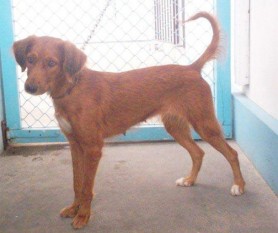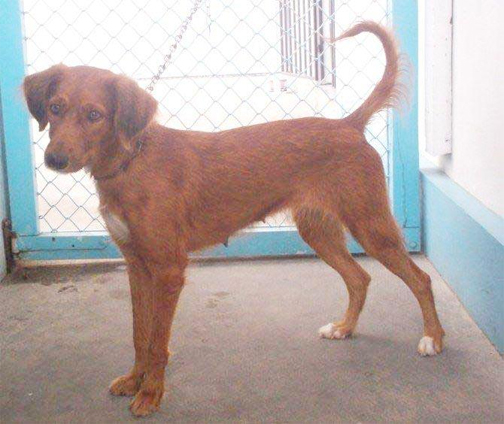We have been discussing maladies associated with the digestive system over the last few weeks. Last week (and the week before) we dealt with acute and chronic gastritis. I should then be continuing on to problems in the intestine and those digestive ailments linked with other organ failure, etc.
 However, there is a worm which can sometimes be found in the oesophagus (the tube linking the oral cavity with the stomach); also, this worm can locate itself in the stomach wall. This worm, in an indirect way, disturbs digestion because of the symptoms its presence unleashes.
However, there is a worm which can sometimes be found in the oesophagus (the tube linking the oral cavity with the stomach); also, this worm can locate itself in the stomach wall. This worm, in an indirect way, disturbs digestion because of the symptoms its presence unleashes.
Furthermore, the oesophageal worm sometimes lodges itself in the wall of the aorta, which is a big blood vessel leaving the heart.
How do dogs get the oesophageal worm?
Dogs that are fed raw meat scraps or those that eat a live animal that is carrying the worm are especially susceptible to the disease. This means that the worm is already in another animal (eg, a chicken, a snake, a rat, etc). That other animal is called the transport host. The moral of this particular story is never to feed raw scraps from the kitchen to your pets, and dissuade them from eating carrion – not lastly by feeding them well, so that there is no need for your companion animals to eat dead and decaying carcasses.
Symptoms
Actually, this oesophageal worm infection actively displays no real clinical symptoms, until it is too late. “Too late” means that the lesion caused by the worm has already become a very large tumour in the oesophagus, thus preventing the food from entering the stomach. The dog then exhibits difficulty in swallowing. The infected animal often regurgitates its food soon after attempting to swallow a morsel. Also, the dog will secrete a lot of saliva (drooling). Because the food is being constantly expelled, the dog loses weight (emaciation) and becomes listless. Some smart books list ‘swollen extremities’ as a symptom as well.
I mentioned earlier that the worm can develop in the wall of the aorta (huge blood vessel). Well, if that weakened wall of the damaged aorta bursts, then we will have a massive haemorrhage on our hands. The animal would bleed to death quickly.
How can we prove that the disease is present in a dog?
Since it is a worm with which we are dealing, one can expect it to discharge eggs. These eggs, we can pick up if we examine the dog’s stool under the microscope. This is not reliable though, because we might be examining faecal matter that has been collected when the oesophageal worm is not laying eggs; then we would have no idea that the worm exists, until the malady is so advanced as to create symptoms.

A gastroscopic examination is possible, but we are constrained, here in Guyana, to carry out such an intervention; no vet in Guyana, to my knowledge, has a gestroscope. An X-ray picture might also be of some assistance in seeing the worm nodule, if it is especially huge.
Actually, the truth be told, one does not usually find the oesophageal worm infestation until the dog is dead and a post mortem is carried out. But although it is rarely seen, I keep it as part of my differential diagnosis – especially when the dog is throwing up its food as soon as it ingests the first morsel.
Treatment
No treatment is really reliable, although some textbooks say that Ketrax (Levamisole) and Albendazole dewormers could help.
Prevention
1) Don’t feed the dog raw meat.
2) Try to stop him from eating lizards, dung, beetles, frogs, rats, chickens, snakes and carrion.
Please implement disease preventative measures (vaccinations, routine dewormings, monthly anti-heartworm medication, etc) and adopt-a-pet from the GSPCA’s Animal Clinic and Shelter at Robb Street and Orange Walk, if you have the wherewithal to care well for the animals. Do not stray your unwanted pets, take them to the GSPCA’s Clinic and Shelter instead. If you do not wish your pet to have puppies or kittens, you may exploit the GSPCA’s free spay and neutering programme. If you see anyone being cruel to an animal, or if you need any technical information, please get in touch with the Clinic and Shelter by calling 226-4237.

